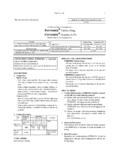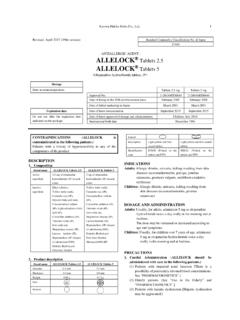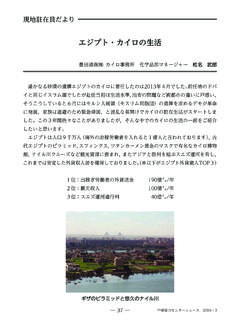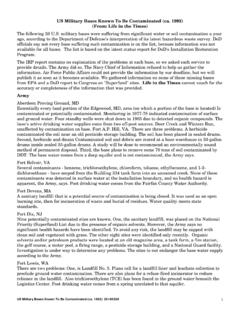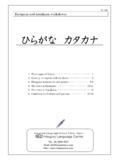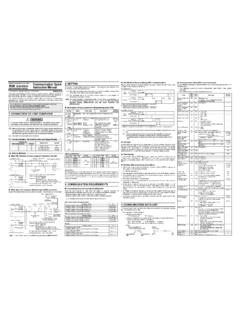Transcription of ADETPHOS KOWA Enteric Coated Tablet 20 ... - e …
1 Kowa Co., Ltd. 1 Revised: September 2009 (7th version) Standard Commodity Classification No. of Japan 873992 - Metabolism Activator - ADETPHOS KOWA Enteric Coated Tablet 20 ADETPHOS KOWA Enteric Coated Tablet 60 ADETPHOS KOWA Granule 10% < ATP Product > DESCRIPTION Brand name ADETPHOS KOWA Enteric Coated Tab-let 20 ADETPHOS KOWA Enteric Coated Tab-let 60 ADETPHOS KOWA Granule 10% Adenosine triphosphate disodium hydrate Ingredi-ent/content mg in each Tablet mg in each Tablet 100 mg in each gram Cellulose, hydroxypropyl cellulose, talc, triethyl cit-rate, titanium oxide Inactive in-gredients Carmellose calcium, magne-sium stearate.
2 Methacrylic acid copolymer LD, sodium lauryl sulfate, polysorbate 80, car-nauba wax Corn starch, hydro-genated oil, sugar, hydroxypropyl me-thylcellulose acetate succinate, sorbitan sesquioleate, gelatinCol-or/dosage form White Enteric film- Coated tablets (Diameter: approximately mm; thickness: approximately mm; weight: approxi-mately g) White Enteric granules Description Odorless, sweet taste Identifica-tion code 120 160 INDICATIONS ADETPHOS KOWA Enteric Coated Tablet 20,60 ADETPHOS KOWA Granule 10% Improvement of symptoms resulting from the follow-ing disease: Improvement of symptoms resulting from the follow-ing disease.
3 Sequelae of head injury Cardiac failure Stabilization of accommo-dative function in accom-modative asthenopia Chronic gastritis accompa-nied with decreased gas-trointestinal function Sequelae of head injury Cardiac failure Stabilization of accommo-dative function in accom-modative asthenopia Chronic gastritis accompa-nied with decreased gas-trointestinal function Dizziness associated with Meniere's disease or inner ear disorder DOSAGE AND ADMINISTRATION For oral use, dosage is 40 mg to 60 mg of adenosine triphos-phate disodium hydrate, three times daily. For oral use, dosage is 100 mg of adenosine triphosphate diso-dium hydrate three times daily when used for dizziness associ-ated with Meniere's disease or inner ear disorder.
4 In addition, the dosage may be adjusted according to the pa-tient s condition. PRECAUTIONS 1. Drug Interactions Precautions for co-administration ( ADETPHOS KOWAE nteric Coated Tablet20,60, Granule10% should be administered with care when co-administered with the following drugs.) Drugs Signs, Symptoms, and Treatment Mechanism and Risk Factors DipyridamoleDipyridamole reportedly in-creases blood concentrations of adenosine, an ATP degra-dation product, and enhances Due to the in-hibitory effects of dipyridamole on adenosine up-Storage Store at room temperature in a tight container.
5 After opening, store under conditions protecting from humidity. Expiration date Indicated on package, etc. Enteric Coated Tablet 20 Enteric Coated Tablet 60 Granule 10% Approval No. (45AM)2758 (45AM)2934 21800 AMX10247 Date of listing in the NHI reim-bursement price February 1972 February 1972 June 2006 Date of initial marketing in JapanFebruary 1972 February 1972 November 1970 Date of latest reevaluation June 1999 Date of latest approval of indica-tions May 1988 2 Kowa Co.
6 , Ltd. the effects of adenosine on cardiac blood vessels. Cau-tion should therefore be ex-ercised when this product is used concomitantly with dipyridamole by closely ob-serving the patient s clinical condition, etc. take resulting in increased blood concentrations of adenosine (an ATP degradation product). 2. Adverse Reactions In accumulated data on oral preparations ( tablets /granules), adverse reactions were reported in 35 ( ) of 1920 patients. The major symptoms were gastrointestinal disorders, nausea and pruritus, etc. No significant abnormalities in laboratory data have been ob-served.
7 (Accumulated data for re-evaluation and application on new indications for ADETPHOS Granule 10%) <1. 0% Incidence unknownGastrointestinal Nausea, anorexia, gastrointestinal dis-orders, constipation tendency, stomatitis Cardiovascular General throbbing Hypersensitivity Pruritus Rash Psychoneu-rologic Headache, sleepiness, restless feeling Sensory Tinnitus Others Feelings of weakness 3. Use in the Elderly Since elderly patients often have reduced physiological function, careful supervision and measures such as reduc-ing the dose are recommended.
8 4. Use during Pregnancy, Delivery or Lactation Use of this drug in pregnant women or in women who may possibly be pregnant is not recommended (safety of this product in pregnant women has not been established.) 5. Pediatric Use The safety of this drug in children has not been established. 6. Precautions concerning Use (1) Precautions regarding dispensing ( tablets only) In the case of press-through packages (PTP), instruct the patient to remove the drug from the package prior to use (if the PTP sheet is swallowed, the sharp corners may penetrate the esophageal mucosa, leading to severe complications such as mediastinitis).
9 (2) Precautions during preparation Do not grind with a mortar, etc., to use this drug. CLINICAL STUDIES The results of double-blind comparative studies showed that this drug was effective for cardiac failure, sequelae of head in-jury, chronic gastritis associated with gastroptosis, asthenopia, and dizziness associated with Meniere's disease or inner ear disorder (granules only).1-5) PHARMACOLOGY 1. Increases blood flow of various organ tissues by vasodi-latory actions. Increases blood flow in the brain (dog, cat, adult male)6-8), heart (dog)9),10), stomach (dog)11) and inner ear (guinea pig).
10 12,13) 2. Increases intravital metabolic activity. Increases metabolic activity in the brain (guinea pig, in vi-tro)14,15), heart (dog, rabbit)16,17), and inner ear (guinea pig, in vitro), ,19). 3. Increases the contractile strength of muscles. Enhances myocardial contractile strength (frog, in vitro)20), and the contractile strength of gastrointestinal smooth mus-cle (rat, healthy adult humans)21,22). 4. Enhances neurotransmission efficiency. Enhances neurotransmission efficiency (bullfrog, in vi-tro).23) 5. Improves impaired function of inner ear. Prevents vestibular function disorder caused by streptomy-cin (guinea pig).
